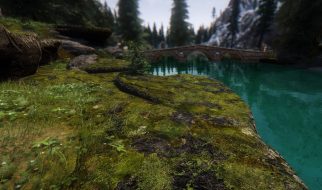
It’s Finally Time for My Oracle of Seasons Remake | Culture of Gaming
The Legend of Zelda: Oracle of Seasons and Oracle of Ages are among two the most criminally underrated video games of?
cultureofgaming.com
The Legend of Zelda: Oracle of Seasons and Oracle of Ages are among two the most criminally underrated video games of all time. Even less favored entries in the franchise like Spirit Tracks or Skyward Sword seem to drum up more conversation. Perhaps it?s their similarity to Link?s Awakening, a game many consider to be Zelda?s best hidden gem. Maybe it was their release for Game Boy Color literally less than a month before the Game Boy Advance launched in the US.
The Oracle games released incredibly late in the life cycle of the Game Boy Color. New hardware was on the horizon and these game sought to send the GBC out with a bang. I remember being feverishly excited for these games. My Zelda obsession was at its peak, having poured the last few years of my life into Ocarina of Time and Majora?s Mask. I was clamoring for a new Zelda experience. After months of impatience, the games launched and my mom bought both ? Oracle of Ages for herself and Oracle of Season for me. But nearly 20 years later, these games feel all but lost to time.
Late to the Party

I was 8 at the time of their release and these served as my first 2D Zelda games. I had only played the Nintendo 64 games before this and my world was flipped upside down. The games were so different from what I had previously understood Zelda to be. Instead of exploring the vast, immersive world of Hyrule from Ocarina of Time, I was tossed into the land of Holodrum in Oracle of Seasons. Exploration was still a focus, but with various blockades preventing progress. Initially, this made the world feel significantly smaller than what I expected.
Clearing a dungeon and acquiring a new item or ability greatly impacted exploration in the over world. Finding the Roc?s Feather that lets you jump not only serves as the key to beating that dungeon and its subsequent boss, but it opens up new chunks of Holodrum to explore. In this way, the initially claustrophobic overworld begins to unfold as you progress through the game. Every new area hides heart pieces, upgrades for your items, and new characters to meet. The puzzle design, boss encounters, and music in these games are all top notch. Puzzles range from classic Zelda simplicity to late-game dungeon design that will push you to the limits of your puzzle solving abilities. This gameplay loop is Zelda in its purest form ? there is very little in the way of padding.
What Sets them Apart?

The two games do have notable differences, however. Both the games look and play identically, but each has a focus on one of the two gameplay foundations of the Zelda franchise. Oracle of Seasons places its focus on the combat, providing more punishing combat encounters in dungeons. The big gameplay hook of this game is the ability to manipulate the seasons of Holodrum to progress. Oracle of Ages takes the opposite approach, instead focusing on the puzzles themselves. Intricately-designed dungeons with complicated puzzles rear their head much earlier in this game. You also control time in Oracle of Ages, which allows you to move between a past and present version of the land of Labrynna.

The games compliment one another excellently, but can easily stand on their own as unique entries in the series. Having completed both multiple times, I prefer Oracle of Seasons for its particular world and sub-world, bosses, and unbelievable score, but Oracle of Ages is just as good. Another unique aspect to these games is that in order to see the true final boss, both games must be completed. The player gains access to passcodes after being one game, which can be used in the second game they beat. These passcodes eventually lead to powerful end-game items and the true final confrontation. It?s an interesting idea that the Zelda series hasn?t attempted since.
Why Do A Remake Now?
Just last week, a re-imagining of Link?s Awakening was released for Nintendo Switch. The game uses a beautiful new art style, depicting the Hero of Time and the mysterious island of Koholint as one big diorama. The characters look like toys in a play set, but the gameplay remains as tight and polished as the original game released in 1993. This effectively dispelled some of our previous concerns.
This is vital because the Oracle games look and play nearly identically to Link?s Awakening. The games share similar items, tile sets, art assets, and gameplay design. The Oracle games were expansions on the 2D formula set forth by Link?s Awakening, taking liberties to set themselves apart. This is the crux of my argument to remake two of my favorite Zelda games ? they are so similar to Link?s Awakening that it would almost be a waste of resources not to use the same engine to remake them.

Fortunately for Nintendo (and myself), the Link?s Awakening remake launched at the top of the sales charts in both the UK and Japan. This proved that demand for a 2D Zelda game is still high in 2019. Hopefully this paves the road for the Oracle remakes to come next. Maybe even in 2021 which will see the games celebrating the 20th anniversary since their release. The nostalgia may not be there for some, but if you ask me, these games are among the best handheld video games I have ever played and are more than deserving of a proper remake.

